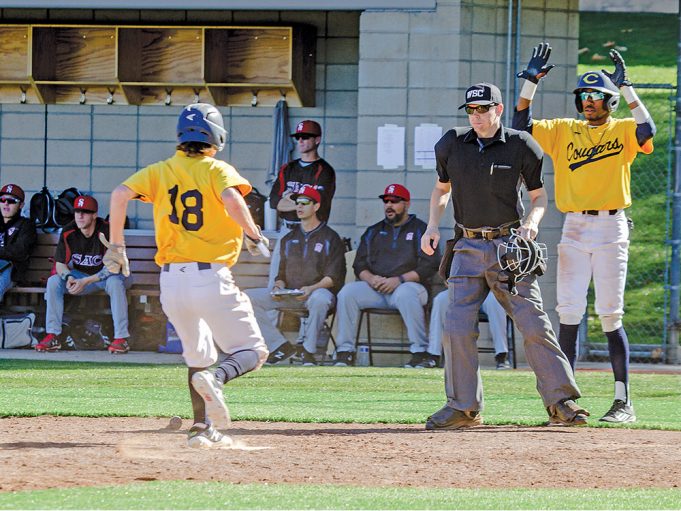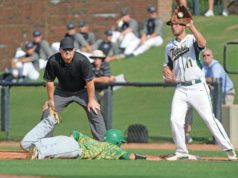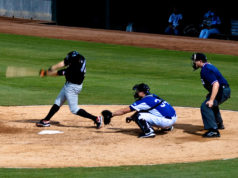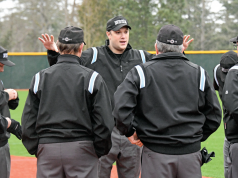We’ve all been there. It’s your night off. You’re settling into your seat to watch your kids or your friend’s kids play a game on the small baseball diamond. Then you hear the coaches discussing what they’re going to do if the umpires don’t show up.
Someone realizes you and your regular umpire partner are sitting in the stands and asks, “Hey, I know you’re both off duty tonight, but can you fill in so we can play?”
Naturally, you both feel compelled to help out. After all, your uniform and gear are in your respective cars. You’ve got everything that’s needed and the kids will be able to play. So why not, right?
But then it hits you. When’s the last time either of you worked a game on a 60-foot diamond? For some umpires, the answer might be never.
Here’s the key: Stick to the fundamentals.
First and foremost, it’s important to always remember to do your absolute best all the time. Even if this is a youth league contest where the players are simply learning the basics of the game, the participants deserve your best effort. Be “on your game” and hustle. Don’t let them down.
Second, find out what rules the game will be played under. Pro rules? NFHS? Some other code? Are there any specific league rules you need to know about so that you can manage the contest appropriately? Can runners lead off? Steal bases? Advance on a dropped third strike?
With that taken care of, you’re almost ready to step on the field. Time for a 60-second review of 60-foot mechanics. If you and your partner also regularly work softball, you’ll be in good shape. Otherwise, take note of the points you want to discuss with your partner so you’re on the same page.
Starting positions.
If the game is played with leadoffs, pickoffs and standard 90-foot diamond rules, it’s OK to work standard 90-foot mechanics if that’s all you’re used to. It will get a little tight for the base umpire to work inside the diamond — and staying out of the way will be problematic at times — but it can be done.
Typically, however, baseball games played on a 60-foot diamond will feature some rules that restrict runners from disengaging the base until the ball is released or reaches the batter. Runners who leave early are either called out or a penalty is assessed after playing action ends, such as putting runners back if they weren’t put out. Working inside the diamond will make it nearly impossible to assess whether a runner left early. As such, the umpires move to outside starting positions. “A” position remains the same on a 60-foot or 90-foot diamond. But “B” and “C” move behind the second baseman and shortstop, respectively. There’s no need to be way back on the outfield grass. Instead, position about 10 feet behind the infielder and to the side, leaving him room to move on a play, but giving you a view of the batter, pitcher and runner(s).
Fly ball coverage.
A 60-foot diamond is a smaller field, so routine fly balls can be left to the plate umpire. Discuss with your partner whether you will go out on trouble balls in the A, B or C positions. Going out often means all the bases are left to the plate umpire, which can be a lot to handle if you’re not used to it — playing action can move fast on the small diamond — so it might be OK to leave all catch/no-catch rulings to the plate umpire and let the base umpire follow the runner(s).
Inside-out mechanics.
A key mechanic when working a 60-foot diamond involves staying outside during an infield hit and moving into the working zone between the pitching mound and second base on an outfield hit. Just remember: On a hit that remains in the infield, work the play from outside the infield — keeping out of the way of the players and potential throws. When a ball is hit to the outfield, the base umpire comes in to the traditional working area. If you’re used to working inside the diamond, it will feel a little different to view plays from the outside. Just focus on getting the best angle to view the play.
Third-base coverage.
Make sure you discuss with your partner what circumstances will bring the plate umpire to third base for the calls there, such as on an outfield hit with a runner on first. Softball mechanics have more situations than 90-foot baseball mechanics for the plate umpire to cover third base, but that level of coverage isn’t necessary to master for your one night filling in. In fact, it’s probably counterproductive to try anything advanced if you’re already in foreign territory.
Ultimately, communication will be key to make sure all calls will be covered, especially if you have never worked with your partner before under these circumstances.
Even a youth game provides you with a chance to work on your footwork and positioning. Take advantage. Every opportunity to step on the field is an opportunity to improve.
Perhaps you’re working with a new or young partner who’s giving umpiring a try for the first time. Show him or her the ropes. Share your knowledge. That’s the only way to grow our brotherhood of officials.
And remember, officiating isn’t just about knowing the rules and enforcing them. It’s about attitude and dealing with people, and that’s even more critical at the youth level. This can be a thoroughly enjoyable experience if you have the right attitude, always strive to get the most from yourself, and treat players, coaches and fans in a professional, respectful and courteous manner.
What's Your Call? Leave a Comment:
Note: This article is archival in nature. Rules, interpretations, mechanics, philosophies and other information may or may not be correct for the current year.
This article is the copyright of ©Referee Enterprises, Inc., and may not be republished in whole or in part online, in print or in any capacity without expressed written permission from Referee. The article is made available for educational use by individuals.



















